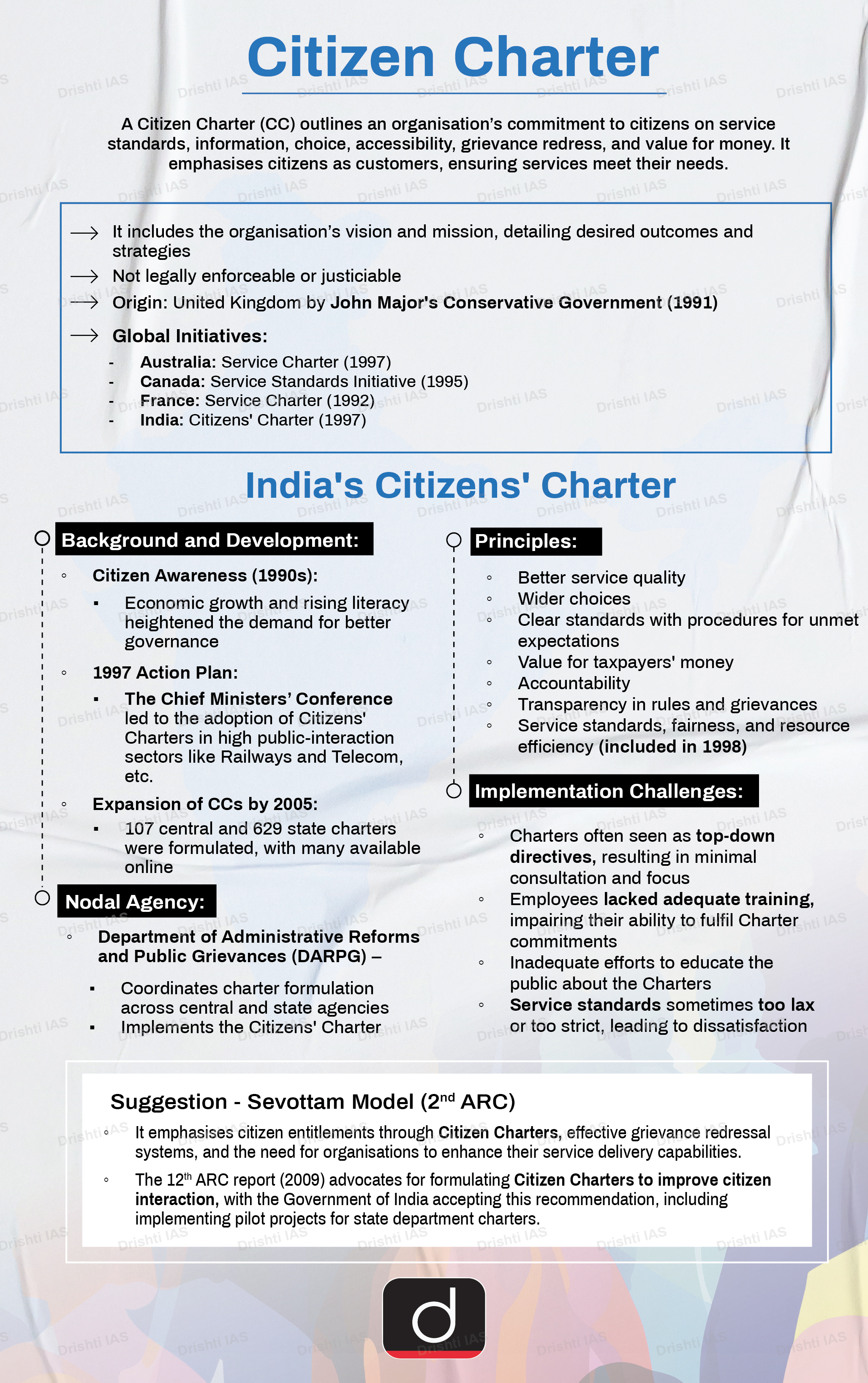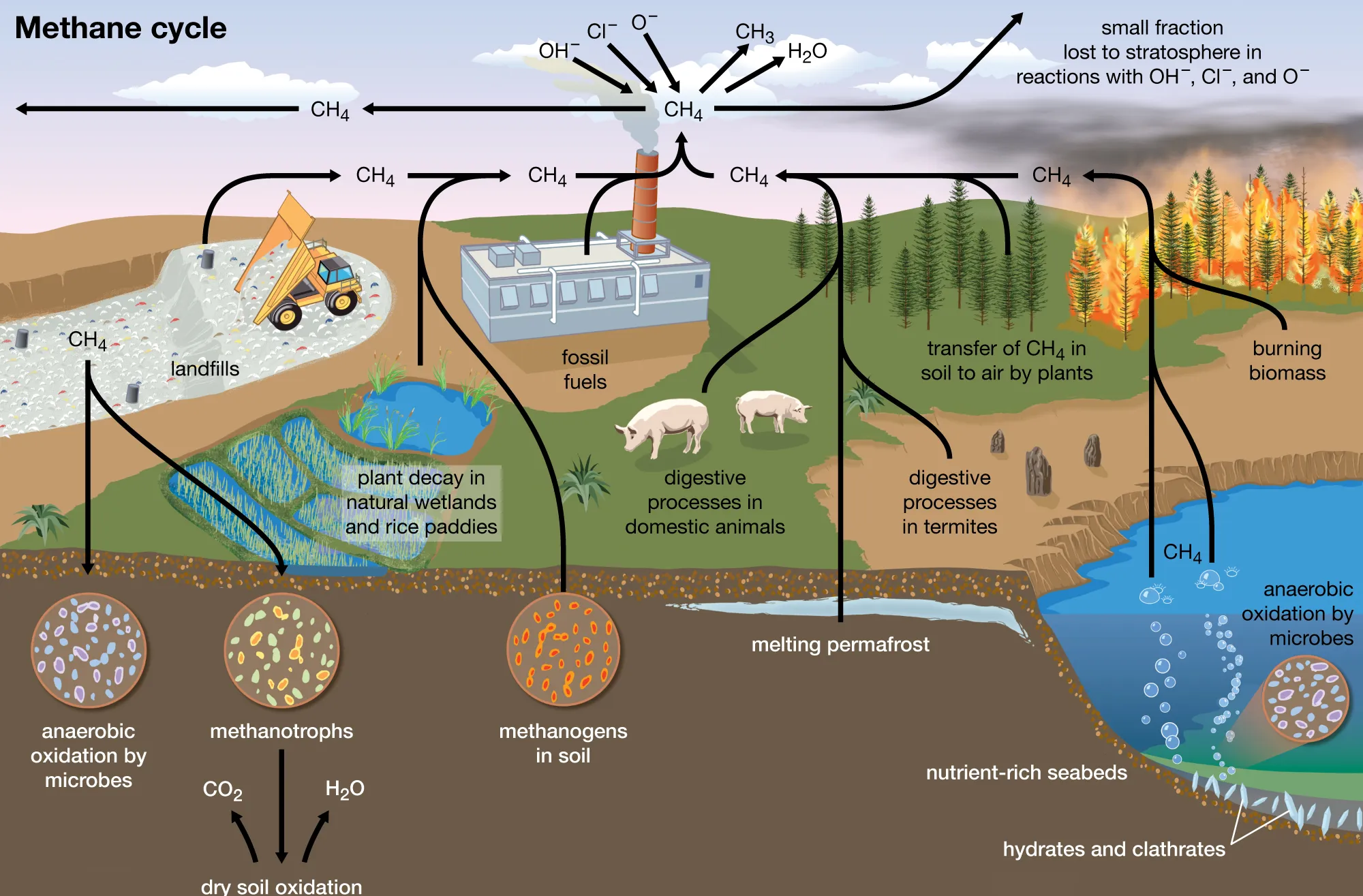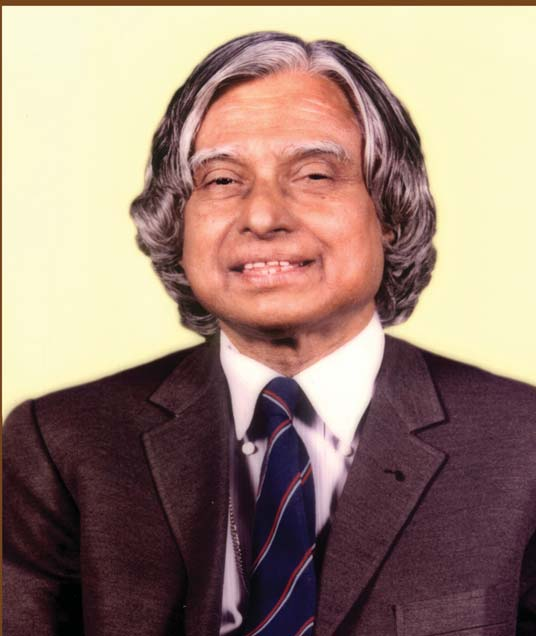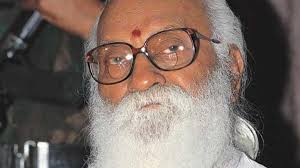Infographics
Biodiversity & Environment
Disruption in Emissions and Uptake of Methane
For Prelims: Climate Change, Methane Cycle, Amazon Rainforest, Wetland, Methanotrophic Microorganisms, Landfills, Livestock, Methane Hydrate, Global Warming Potential, Global Warming, Tropospheric Ozone, Aerobic Digestion, Mangroves, Salt Marshes.
For Mains: Impact of climate change on Methane cycle and vice-versa, Steps to balance Methane cycle.
Why in News?
Recently, new research warned that climate change could disrupt the Methane Cycle (methane emissions and uptake) in the Amazon rainforest, leading to significant global consequences.
- The methane cycle refers to the series of processes that control the production, consumption, and release of methane (CH4) in the environment.
What are the Key Highlights of the Research on Methane?
- Floodplain Ecosystems: Floodplains (waterlogged areas) in the Amazon contribute up to 29% of global wetland methane emissions. Climate changes increase the risk of methane-producing microbes.
- Upland Forests: Upland forests in the Amazon function as methane sinks.
- The study found that methane uptake in upland forest soils dropped by 70% under warmer, drier conditions, signalling a reduction in their capacity to mitigate methane emissions.
- Methane Cycling: The research also delved into the role of methanotrophic microorganisms, which consume methane.
- Isotope analysis showed that both aerobic and anaerobic methane-consuming microbes were active in floodplains, highlighting the complex interactions in methane cycling in the Amazon.
What is a Methane Cycle?
- There are many sources like wetlands that release methane (CH4) into the atmosphere. There are also sinks or ways that methane is trapped or destroyed.
- The methane cycle begins in the soil where methane gas is created by microbes.
- Soil methane is consumed by methanotrophs, microorganisms that feed on methane.
- Methanogens make more methane that methanotrophs consume.
- Methanotrophs live in drier oxygen-rich upper layers of soil because they need oxygen to function.
- Their food bubbles rise to the surface, releasing methane into the atmosphere.
- This methane joins methane from other sources, such as landfills, livestock and exploitation of fossil fuels.
- The main mechanism for removal of methane from the earth’s atmosphere is oxidation within the troposphere by the hydroxyl radical (OH).
- Hydroxyl radicals are a form of sink because they scrub the atmosphere clean of pollutant molecules and break them down. For this reason OH is known as the ‘cleanser of the atmosphere’.
- After reacting with OH, atmospheric methane is converted to CO2 by a long series of chemical reactions.
- Some of the methane present in the troposphere passes into the stratosphere where a similar process removes it from the atmosphere..
How Global Warming Can Impact Methane Cycle?
- Imbalance in Sources and Sinks: In an ideal world, methane sources would be balanced with methane sinks, as with CO2, however, global atmospheric methane concentrations are rising as a result of human activities.
- Scientists are worried because as the planet warms, even more methane will be released from soils or other places adding to the global warming problem.
- Methane Clathrates: Methane crystals form in cold, oxygen-poor undersea sediments. Clathrates are also trapped in permafrost, the permanently frozen soil in the arctic and subarctic latitudes.
- Clathrate ice, also called methane hydrate, is solid and white, similar to water ice. However, this ice consists of water molecules that are frozen around molecules of methane.
- Role of Clathrate Deposits: Clathrate deposits were once sinks where methane was isolated.
- However, as the planet warms, some of these deep, cold sediments are melting, sending methane bubbling to the surface.
- Because CH4 is a greenhouse gas, it traps heat in the atmosphere and warms the planet more.
How Disruption in the Methane Cycle Can Have Global Consequences?
- Contributor to Global Warming: Methane is the second most significant greenhouse gas driving climate change, following carbon dioxide (CO₂).
- Due to its high global warming potential (28 times greater than carbon dioxide over a 100-year period), even small amounts of methane can significantly contribute to global warming.
- Halts Checking Global Warming Efforts: According to data from the United States National Oceanic and Atmospheric Administration, even as carbon dioxide emissions decelerated during the Covid-19 lockdowns of 2020, atmospheric methane shot up.
- Health Impacts: Methane is a key precursor gas of the harmful air pollutant, tropospheric ozone.
- Ozone is responsible for about 1 million premature respiratory deaths globally.
- Globally, increased methane emissions are responsible for half of the observed rise in tropospheric ozone levels.
- Effects on Air Quality: Increased methane emissions deplete hydroxyl radicals (OH), which act as a natural detergent for atmospheric pollutants. This reduction allows other air pollutants to persist longer, worsening air quality.
- Agriculture Impacts: Methane contributes to staple crop losses of up to 15% annually by increasing atmospheric temperatures and producing tropospheric ozone.
- Economic Impacts: Methane’s impacts on climate change and public health contributes to a yearly loss of roughly 400 million hours of work globally due to extreme heat.
- Biodiversity Threats: Methane-induced climate change disrupts ecosystems, causing shifts in species distributions, loss of biodiversity, and destabilisation of ecological interactions, impacting plant and animal health.
How Can We Balance the Methane Cycle?
- Enhanced Landfill Design: Lining systems and gas collection wells in landfills can be used to capture methane for energy use rather than allowing it to escape into the atmosphere.
- Livestock Management: Additives such as seaweed or specific enzymes have been shown to lower methane emissions from ruminants which can help mitigate emissions from livestock.
- Aerobic Treatment Methods: Technologies such as aerobic digestion can effectively eliminate organic matter from wastewater without producing methane.
- Rice Cultivation Practices: Implementing alternative wetting and drying practices in rice cultivation can minimise methane emissions by reducing the time fields are flooded.
- Soil Health Management: Enhancing soil health through the use of organic fertilisers and crop rotation can reduce methane emissions by promoting aerobic conditions in the soil, which are less conducive to methane production.
- Pest Management: Research into environmentally friendly pest management strategies could help regulate termite populations in areas where their emissions are significant.
- Coastal Ecosystem Restoration: Protecting and restoring coastal ecosystems, such as mangroves and salt marshes, can enhance their ability to absorb carbon and mitigate methane emissions from sediments.
- Safe Extraction Practices: If methane hydrates are to be extracted for energy, developing safe extraction technologies that minimise methane leakage is crucial.
- Reducing Fossil Fuel Use: Transitioning to renewable energy sources can reduce overall methane emissions associated with fossil fuel extraction and consumption.
|
Drishti Mains Question: Discuss the significance of the methane cycle in the context of climate change. What are the major sources and sinks of methane? |
UPSC Civil Services Examination, Previous Year Questions (PYQs)
Prelims
Q. Which of the following statements is/are correct about the deposits of ‘methane hydrate’? (2019)
- Global warming might trigger the release of methane gas from these deposits.
- Large deposits of ‘methane hydrate’ are found in Arctic Tundra and under the sea floor.
- Methane in the atmosphere oxidises to carbon dioxide after a decade or two.
Select the correct answer using the code given below.
(a) 1 and 2 only
(b) 2 and 3 only
(c) 1 and 3 only
(d) 1, 2 and 3
Ans: (d)
Q. Consider the following: (2019)
- Carbon monoxide
- Methane
- Ozone
- Sulphur dioxide
Which of the above are released into atmosphere due to the burning of crop/biomass residue?
(a) 1 and 2 only
(b) 2, 3 and 4 only
(c) 1 and 4 only
(d) 1, 2, 3 and 4
Ans: (d)
Q. Due to their extensive rice cultivation, some regions may be contributing to global warming. To what possible reason/reasons is this attributable? (2010)
- The anaerobic conditions associated with rice cultivation cause the emission of methane.
- When nitrogen based fertilisers are used, nitrous oxide is emitted from the cultivated soil.
Which of the statements given above is/are correct?
(a) 1 only
(b) 2 only
(c) Both 1 and 2
(d) Neither 1 nor 2
Ans: (c)
Mains
Q. How do the melting of the Arctic ice and glaciers of the Antarctic differently affect the weather patterns and human activities on the Earth? Explain. (2021)
Q. ‘Climate change’ is a global problem. How will India be affected by climate change? How Himalayan and coastal states of India be affected by climate change? (2017)

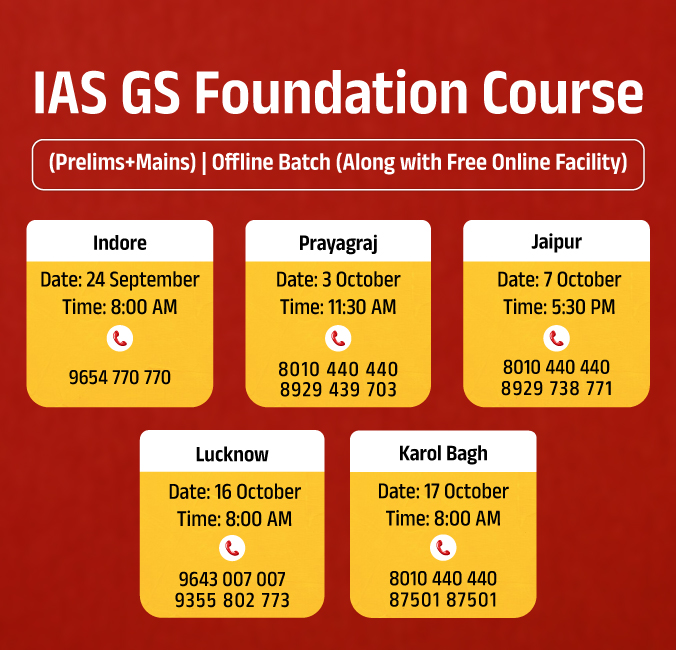
Indian Economy
3 Years of PM GatiShakti National Master Plan
For Prelims: PM GatiShakti National Master Plan, Public-Private Partnerships (PPP), Parvatmala ropeways, Aspirational Blocks Programme.
For Mains: Issues with the Implementation of PM GatiShakti scheme, Challenges in the Indian Logistics Sector
Why in News?
Recently the Prime Minister praised the successful completion of 3 years of PM GatiShakti National Master Plan, calling it a transformative step in India’s infrastructure growth.
- The Prime Minister highlighted that GatiShakti is enhancing multimodal connectivity and boosting efficiency across sectors, benefiting logistics, job creation, and innovation.
What is PM GatiShakti National Master Plan?
- About:
- The PM Gati Shakti National Master Plan, launched in October 2021 is a transformative Rs. 100 lakh crore initiative aimed at revolutionising India’s infrastructure over the next five years.
- It has been developed as a Digital Master Planning tool by BISAG-N (Bhaskaracharya National Institute for Space Applications and Geoinformatics).
- It has been prepared in a dynamic Geographic Information System (GIS) platform wherein data on specific action plans of all the Ministries/Departments have been incorporated within a comprehensive database.
- The plan seeks to accelerate project completion, reduce timelines, and enhance India’s global competitiveness by breaking down inter-ministerial obstacles.
- The vision of PM GatiShakti is to create a world-class infrastructure that improves the ease of living, boosts economic growth and makes Indian businesses more competitive.
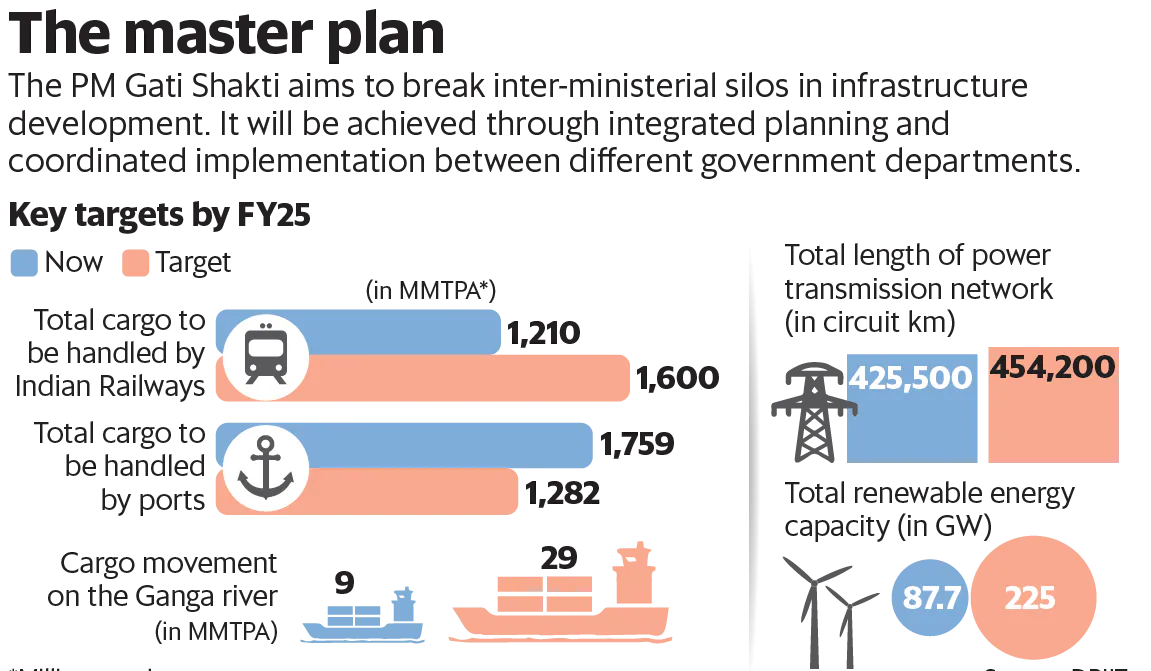
- Key Features:
- Digital Integration: It is a digital platform designed to integrate the efforts of 16 ministries, ensuring seamless infrastructure planning and execution across sectors.
- Multi-Sector Collaboration: The platform incorporates infrastructure initiatives from several major programs, including Bharatmala, Sagarmala, inland waterways, dry ports, and UDAN.
- Economic Zones: Focuses on developing key economic areas such as textile clusters, pharmaceutical hubs, defence corridors, and agricultural zones to boost economic productivity.
- Use of Technology: Advanced spatial planning tools and ISRO satellite imagery, developed by BiSAG-N, provide data-driven insights for project planning and management.
- Key Engines Driving PM GatiShakti:
- The National Master Plan revolves around seven primary sectors that drive economic growth and connectivity:
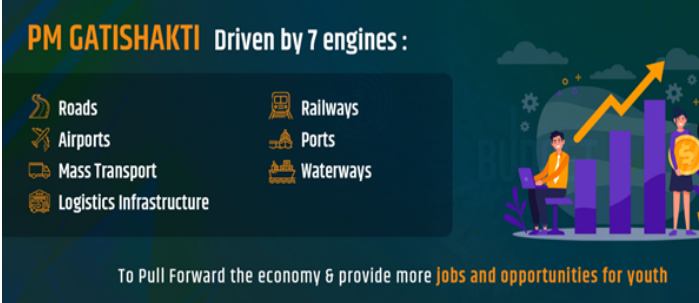
- These key engines are further supported by complementary sectors like energy transmission, IT communication, bulk water and sewerage, and social infrastructure.
- Together, these engines are designed to work in synergy, ensuring seamless logistics and connectivity across the nation.
- The National Master Plan revolves around seven primary sectors that drive economic growth and connectivity:
- The 6 Pillars of PM GatiShakti:
- Comprehensiveness: The plan integrates existing and planned initiatives across all ministries through a centralised portal, offering visibility into critical data and enabling efficient planning.
- Prioritisation: Ministries can prioritise projects more effectively by leveraging cross-sectoral interactions, ensuring that resources are allocated optimally based on national priorities.
- Optimisation: The plan identifies key gaps in infrastructure, helping to select the most efficient routes for transportation, reducing costs, and minimising delays.
- Synchronisation: Coordination across ministries ensures that projects are aligned and work in harmony, avoiding delays caused by silos and uncoordinated efforts.
- Analytical Capabilities: With over 200 data layers available on the GIS-based platform, PM GatiShakti provides comprehensive spatial planning tools for better decision-making and infrastructure visibility.
- Dynamic Monitoring: Real-time project monitoring through satellite imagery ensures that ministries can track progress and make necessary adjustments to keep projects on schedule.
What are the Achievements of PM GatiShakti National Master Plan?
- District-Level Expansion: PM GatiShakti has extended its platform to 27 aspirational districts, with plans to reach 750 districts in the coming months.
- Technological Integration: The use of geospatial tools and dynamic data layers has significantly improved real-time infrastructure planning and decision-making.
- Global Showcasing: The GatiShakti tool has been showcased to 30 countries in Central Asia and Southeast Asia, and was recently highlighted at the UNESCAP conference in Hong Kong and the Asia Pacific Business Forum.
- Social Sector Integration: Ministries such as the Ministry of Health and Family Welfare have identified internet-show areas and mapped sites for new healthcare facilities using NMP.
- Uttar Pradesh has utilised the platform to select sites for new hospitals and wheat purchase centres.
- Rural and Urban Impact: Districts like Dahod in Gujarat have used satellite imagery for planning low-cost drip irrigation systems, while Arunachal Pradesh has leveraged data visualisation to develop tourist potential around the Bichom Dam.
- In cities like Kanpur, Bengaluru, and Srinagar, city logistics plans have been developed to improve first- and last-mile connectivity.
- Employment and Vocational Training: The Ministry of Skill Development and Entrepreneurship is using the Gati Shakti approach to identify locations for setting up training institutes near industrial clusters and special economic zones.
What are the Challenges of PM GatiShakti National Master Plan?
- Data Integration and Accuracy: Combining real-time data from multiple ministries is difficult, and some of the data is outdated or incomplete, making planning less effective.
- For example, while land records are digitised in 13 states, the rest lag behind, slowing down project execution.
- Inter-Ministerial Coordination: Ministries often work in silos, causing delays and resource conflicts for major projects like roads and railways.
- A lack of proper coordination between states and ministries, as seen in the Sagarmala and Bharatmala projects, leads to slower progress
- Regulatory Bottlenecks: Projects face long delays in getting approvals, especially for environmental and land clearances.
- Even with tools for route optimization, power transmission projects in hilly areas take time to clear, slowing overall progress.
- Power and road projects in hilly areas often face delays due to environmental concerns, displacement issues, and local protests, slowing approval and progress.
- Financing and Resource Allocation: Securing enough funding for large projects, especially at the local level, is a challenge.
- Public-private partnerships (PPPs) are limited in many regions, leaving the government to bear the financial burden, which delays project completion.
- Lack of Skilled Manpower: Not all states have the necessary technology or skilled staff to fully use the GatiShakti platform, unlike states like Uttar Pradesh and Gujarat, which utilize it effectively.
- Project Monitoring and Accountability: Although the platform allows for real-time tracking, project updates are not always regular, which delays completion.
- For instance, rural road projects in many districts are not properly tracked, leading to slow progress.
How Can the Implementation of PM GatiShakti National Master Plan Be Enhanced?
- Improve Real-Time Data: Ministries should expand their use of satellite imagery and geospatial data to keep project data accurate and up-to-date.
- Accelerating land record digitization across all states will ensure smoother project implementation and reduce delays caused by outdated information.
- Enhance Inter-Ministerial Coordination: Create inter-ministerial task forces to improve communication and synchronisation between ministries.
- Use the GatiShakti platform to ensure all ministries can track each other’s activities in real-time, reducing delays and resource conflicts for large projects.
- Provide Training and Support for Technology Adoption: Expand Gati Shakti Vishwavidyalaya and set up regional centers to provide training in infrastructure planning and project management, ensuring states can fully use GatiShakti tools.
- Streamline Regulatory Approvals: Use GIS-based tools for faster environmental and land clearance processes.
- Fast-tracking approvals, especially for critical infrastructure projects, will help reduce the regulatory bottlenecks that slow down projects.
- Attract Private Investment: Use Infrastructure Investment Trusts (InvITs), Real Estate Investment Trusts (REITs) and Sovereign Wealth Funds to finance large-scale projects.
- This will help reduce the financial load on the government, improve resource allocation, and attract more private and international investors.
- Promote Sustainable Practices: Incorporate environmentally friendly practices into all infrastructure projects.
- Engage local communities early in the planning process to address environmental and social concerns, minimising resistance and ensuring smoother execution, especially in sensitive areas like the Himalayas.
|
Drishti Mains Question: What are the key challenges faced by the PM GatiShakti National Master Plan? |
UPSC Civil Services Examination, Previous Year Questions (PYQs)
Prelims
Q1. With reference to ‘National Investment and Infrastructure Fund’, which of the following statements is/are correct? (2017)
- It is an organ of NITI Aayog.
- It has a corpus of `4,00,000 crore at present.
Select the correct answer using the code given below:
(a) 1 only
(b) 2 only
(c) Both 1 and 2
(d) Neither 1 nor 2
Ans: (d)
Q2. In India, the term “Public Key Infrastructure” is used in the context of (2020)
(a) Digital security infrastructure
(b) Food security infrastructure
(c) Health care and education infrastructure
(d) Telecommunication and transportation infrastructure
Ans: (a)
Mains:
Q. “Investment in infrastructure is essential for more rapid and inclusive economic growth.” Discuss in the light of India’s experience. (2021)


Biodiversity & Environment
Forest Destruction in Ukraine War
For Prelims: Sviati Hory National Park, Pine Forests, Przewalski Horse, Carbon Capture, World Bank, Methane, Nitrous Oxide, Sulphur Dioxide, Chlorofluorocarbons, Soil Erosion, Nutrient Cycles, Orangutan, Environmental Modification Convention (ENMOD), Biodiversity, UN Environment Programme (UNEP), Forest Stewardship Council (FSC), Munduruku people of the Amazon, Convention on International Trade in Endangered Species (CITES), Convention on Biological Diversity, UN Framework Convention on Climate Change, Bonn Challenge, United Nations Decade on Ecosystem Restoration (2021-2030).
For Mains: Effect of war on forests and environment.
Why in News?
Recently, a fire caused by a blast wiped out three hectares of 80 year old pine trees at the Sviati Hory national park in eastern Ukraine.
How the Ukraine War Caused Forest Destruction?
- Widespread Forest Destruction: Eastern Ukraine's pine forests, including the rare chalk pine, have suffered severe damage, with about 80% of Luhansk (Russian-held areas) region's pine forests destroyed.
- Around 425,000 hectares of forest across Ukraine have been contaminated with mines and unexploded ordnance.
- Impact on Wildlife: The conflict has left vast areas stripped of wildlife habitats, affecting species such as deer, boars, woodpeckers, and the endangered Przewalski’s horses.
- Environmental Damage: Forest fires caused due to war emitted an equivalent of 6.75 million metric tons of carbon dioxide, equal to the annual emissions of Armenia.
- The carbon capture potential of forests has been lost due to the destruction of trees, compounding environmental damage.
- Soil and Water Contamination: The war has poisoned soil and rivers across Ukraine, creating long-term environmental hazards.
- It has left the land unsuitable for habitation and regeneration.
- Long-Term Consequences: Experts estimate that demining (landmine clearance) efforts could take 70 years, and the subsequent regeneration of forests could take even longer.
- Economic Cost: The World Bank estimated the total damage to forests and natural protected areas, including wetlands, exceeds USD 30 billion.
- This includes USD 3.3 billion in direct damage, USD 26.5 billion in broader economic and environmental costs, and a USD 2.6 billion repair bill.
What are the Consequences of Forest Destruction?
- Global Warming: Deforestation is responsible for 11% of global greenhouse gas emissions, including gasses like CO2, CH4 (methane), N2O (nitrous oxide), SO2 (sulfur dioxide), and chlorofluorocarbons (CFCs).
- Since 1990, 420 million hectares of forests have been lost due to conversion to agriculture, industrial use etc to support the rising global population.
- Impact on Climate and Rainfall: Trees release water into the atmosphere through transpiration, contributing to rainfall.
- Deforestation reduces this process, leading to diminished rainfall and disruptions in the water cycle, amplifying the double effects on climate and agriculture.
- Depletion of Clean Water Sources: According to experts, a 1% increase in deforestation results in a 0.93% decrease in the availability of clean drinking water in rural communities that rely on open wells and flowing streams.
- Rise in Infectious Diseases: Deforestation leads to spikes in infectious diseases like malaria and dengue, as it disrupts ecosystems and facilitates the spread of disease-causing germs.
- Soil Degradation: The loss of forests results in soil degradation, further harming agriculture and natural ecosystems.
- Forests play a crucial role in preventing soil erosion, maintaining nutrient cycles, and conserving water resources.
- Loss of Biodiversity: Deforestation is responsible for destroying the habitats of millions of animals, plants, and insects, leading to species extinction.
- In the Amazon alone, 10,000 species are at risk, including 2,800 animal species.
- Palm oil production, in particular, has driven species like orangutans to the brink of extinction.
What Initiatives Can be Taken to Preserve Forest?
- Strengthening International Treaties: Support initiatives like the Environmental Modification Convention (ENMOD), which bans the use of environmental destruction as a method of warfare.
- Expand international laws to explicitly prohibit deliberate destruction of forests during warfare, akin to war crimes.
- War-Free Conservation Zones: Establish peace parks or conservation zones in conflict areas, where forests and biodiversity are shielded from the direct impacts of war.
- Post-War Reforestation: Implement large-scale reforestation projects in areas that suffered forest loss due to war.
- International organisations, such as the UN Environment Programme (UNEP), can play a critical role in coordinating these efforts.
- Limiting Resource Exploitation During War: Track and block the trade of conflict timber, similar to how conflict diamonds are regulated, to stop financing war through environmental destruction.
- Zero Deforestation Policies: By implementing "zero deforestation" policies, companies can clean up their supply chains, ensuring that commodities like timber, beef, soy, palm oil, and paper are produced in ways that do not fuel deforestation.
- Third-party Certification: Third-party certification, such as the Forest Stewardship Council (FSC), can be a useful tool to ensure that any virgin fibre used is sourced in a legal, environmentally, and socially responsible way.
- FSC is an international, non-governmental organisation dedicated to promoting responsible management of the world's forests via timber certification.
- Supporting Indigenous Peoples: Indigenous Peoples is crucial in preserving forests.
- E.g., The Munduruku people of the Amazon are fighting to protect their forests from destructive projects like logging and dam construction.
- Sustainable Consumer Choices: Informed daily choices such as avoiding single-use packaging, and choosing responsibly-produced wood products can help reduce deforestation.
- Reducing or adopting a plant-based diet is also encouraged to help protect forests.
- Government Policies: Treaties like the Convention on International Trade in Endangered Species (CITES), the Convention on Biological Diversity, and the UN Framework Convention on Climate Change can help protect forests globally.
What are the Various Global Afforestation Initiatives?
- Bonn Challenge
- The Trillion Trees
- United Nations Decade on Ecosystem Restoration (2021-2030)
- Great Green Wall
- Global Forest Financing Facilitation Network
Conclusion
The Ukraine war has devastated forests, wildlife, and the environment, exacerbating global warming, habitat loss, and soil degradation. Addressing forest destruction requires stronger international treaties, post-war reforestation, war-free conservation zones, zero deforestation policies, sustainable consumption, and support for Indigenous communities to protect forests globally.
|
Drishti Mains Question: Discuss the impact of wars on forest ecosystems. What are the long-term environmental consequences of such forest destruction? |
UPSC Civil Services Examination, Previous Year Question (PYQ)
Prelims
Q. Which of the following statements is/are correct?
Proper design and effective implementation of UNREDD+ Programme can significantly contribute to (2016)
- protection of biodiversity
- resilience of forest ecosystems
- poverty reduction
Select the correct answer using the code given below:
(a) 1 and 2 only
(b) 3 only
(c) 2 and 3 only
(d) 1, 2 and 3
Ans: (d)
Q. With reference to ‘Forest Carbon Partnership Facility’, which of the following statements is/are correct? (2015)
- It is a global partnership of governments, businesses, civil society and indigenous peoples.
- It provides financial aid to universities, individual scientists and institutions involved in scientific forestry research to develop eco-friendly and climate adaptation technologies for sustainable forest management.
- It assists the countries in their ‘REDD+ (Reducing Emissions from Deforestation and Forest Degradation+)’ efforts by providing them with financial and technical assistance.
Select the correct answer using the code given below:
(a) 1 only
(b) 2 and 3 only
(c) 1 and 3 only
(d) 1, 2 and 3
Ans: (c)
Q.‘BioCarbon Fund Initiative for Sustainable Forest Landscapes’ is managed by the (2015)
(a) Asian Development Bank
(b) International Monetary Fund
(c) United Nations Environment Programme
(d) World Bank
Ans: (d)
Mains
Q. The process of desertification does not have climate boundaries. Justify with examples (2020)
Q. The states of Jammu and Kashmir, Himachal Pradesh and Uttarakhand are reaching the limits of their ecological carrying capacity due to tourism. Critically evaluate. (2015)


Important Facts For Prelims
Offence of ‘Abetment of Suicide’
Why in News?
Recently, the Supreme Court has interpreted the crime of ‘abetment of suicide,’ detailing the criteria for determining guilt in such cases.
What is Abetment of Suicide?
- About: Abetment of suicide is an offence under Section 306 of the Indian Penal Code (IPC) (Section 108 of the Bharatiya Nyaya Sanhita (BNS)).
- The punishment for this crime is up to 10 years of imprisonment and a fine.
- Section 45 of the Bharatiya Nyaya Sanhita (BNS) defines abetment as when a person either instigates someone to commit an act, conspires with others to do something (leading to an illegal act or omission), or intentionally aids in its execution.
- SC’s Interpretation:
- The offence requires “direct and alarming encouragement or incitement” that leaves no option but fatal step.
- The court laid down following guidelines to determine whether a situation involved unbearable harassment or emotional exploitation that drove the deceased to suicide.
- The accused created unbearable harassment or torture, leading the victim to view suicide as the only escape.
- The accused exploited the victim's emotional vulnerability, making them feel worthless or undeserving of life.
- The accused threatened harm to the victim's family or caused financial ruin.
- The accused made false allegations that damaged the victim's reputation, leading to public humiliation and loss of dignity.
- Related Cases:
- M Mohan v The State, 2011: The SC ruled that proving abetment of suicide under Section 306 IPC requires a direct act with intent, leaving the victim no option but suicide.
- Ude Singh v State of Haryana, 2019: The SC held that proving abetment of suicide depends on case specifics, requiring direct or indirect incitement that leaves the victim no choice but suicide.
- Government Initiatives for Suicide Prevention:
What is the Statistics Related to Suicide in India?
- The data compiled by the NCRB is based on police-recorded first information reports (FIRs).
- Surge in Student Suicides: Student suicides in India have surged by 4% annually, outpacing the overall suicide rate increase of 2%, despite a likely "under reporting" of student suicide cases.
- Gender Disparity: In 2022, male students constituted 53% of total student suicides. While male suicides decreased by 6% from 2021, female student suicides saw a 7% rise.
- Decade Trend: Over the past decade, despite a slight decrease in the 0-24 age group population, student suicides rose significantly from 6,654 to 13,044.
- State-Wise Distribution: Maharashtra, Tamil Nadu, and Madhya Pradesh reported the highest numbers of student suicides, collectively accounting for one-third of the national total.
- Legal Norms Related to Suicide:
- Section 115 of Mental Healthcare Act, 2017 (MHCA) states that attempted suicide is to be considered the result of severe stress, and the individual is not to be prosecuted.
- BNS removes the Section of attempt to commit suicide from the statute books, it doesn’t entirely decriminalize the offence of attempting to die by suicide.
- Section 224 of the BNS states that attempting to commit suicide with the intent to compel any public servant to discharge their official duties shall be punishable by imprisonment for up to one year, a fine, or both.


Important Facts For Prelims
Birth Anniversary of Dr APJ Abdul Kalam
Why in News?
Recently, President Droupadi Murmu honoured former President Dr. APJ Abdul Kalam on his birth anniversary.
What are the Key Facts of Dr APJ Abdul Kalam?
- About:
- Born on 15th October 1931 at Rameswaram in Tamil Nadu.
- He planned programmes to produce a number of successful missiles, which helped earn him the nickname “Missile Man of India”.
- He was sworn in as India’s 11th President in 2002 and completed the full term in 2007.
- Awards Received:
- He was awarded the coveted civilian awards - Padma Bhushan (1981) and Padma Vibhushan (1990) and the highest civilian award Bharat Ratna (1997).
- Dr. Kalam, a renowned Indian scientist, holds honorary doctorates from 48 universities and institutions in India and internationally.
- Literary Works:
- Wings of Fire
- India 2020 - A Vision for the New Millennium
- My journey and Ignited Minds-Unleashing the power within India
- Indomitable Spirit
- Contributions:
- Pioneer in Fiberglass Technology: He was a pioneer in fibreglass technology and led a young team to initiate this effort in ISRO.
- Satellite Launch Vehicle (SLV-3): As Project Director, he played a key role in developing India's first indigenous Satellite Launch Vehicle (SLV-3), which successfully launched the Rohini satellite into orbit in July 1980, marking India's entry into the Space Club.
- Indigenous Guided Missiles: He was the Chief Executive of Integrated Guided Missile Development Programme (IGMDP)
- He led the weaponization of strategic missile systems and the Pokhran-II nuclear tests in collaboration with the Department of Atomic Energy.
- APJ Abdul Kalam witnessed the country's first nuclear test, Smiling Buddha, and later directed Project Devil and Project Valiant -- efforts to develop ballistic missiles from the technology of the successful SLV programme.
- Technology Vision 2020: In 1998, he proposed Technology Vision 2020, a national plan aimed at transforming India from a developing to a developed nation within 20 years.
- Medical and Healthcare: APJ Abdul Kalam, in collaboration with cardiologist B. Soma Raju, developed the affordable ‘Kalam-Raju Stent’ for coronary heart disease, making healthcare more accessible.
Read More: President of India, Presidential Election, Top 10 ISRO Missions
UPSC Civil Services Examination Previous Year Questions
Prelims
Q. With reference to the election of the President of India, consider the following statements: (2018)
- The value of the vote of each MLA varies from State to State.
- The value of the vote of MPs of the Lok Sabha is more than the value of the vote of MPs of the Rajya Sabha.
Which of the statements given above is/are correct?
(a) 1 only
(b) 2 only
(c) Both 1 and 2
(d) Neither 1 nor 2
Ans: (a)


Important Facts For Prelims
Mid-Air Booster Recovery
Why in News?
Recently, Elon Musk's SpaceX used a pair of giant robotic arms named Mechazilla to grab Starship's booster Super Heavy, mid-air after separation from the Starship rocket.
- This novel approach improves the booster's reusability by avoiding ocean landings and reducing costs and turnaround time.
What are the Key Points of the Mechazilla (Mid-Air Booster Recovery)?
- About Mechazilla: It refers to SpaceX's towering structure equipped with a pair of giant robotic arms designed to catch and recover the parts of launch vehicles during its descent.
- Working of Mechazilla: Once the launch vehicle separates from the booster, the booster returns to the launch site, using grid fins to control its descent and orientation.
- As it nears the launch tower, the robotic arms, which are controlled by precision motors and actuators, align vertically along the tower.
- Difference from Falcon 9 Recovery: Falcon 9 booster lands on specially-built platforms using landing legs strapped to its side, rather than being caught in mid-air.
- Comparison with Competitors:
- Rocket Lab: It employs helicopters to catch boosters mid-air using parachutes.
- Blue Origin: It uses its New Shepard rocket to land vertically, relying on its engines to slow descent.
- United Launch Alliance (ULA): It focuses on recovering key engine components instead of the entire booster. ULA is a joint venture between Boeing and Lockheed Martin.
- NASA: NASA uses parachutes for rocket recovery and is experimenting with hypersonic inflatable aerodynamic decelerators (HIAD).
- HIAD consists of a Flexible Thermal Protection System (F-TPS) that protects the entry vehicle through hypersonic atmospheric entry.
- Significance of the Mission: The successful capture of the booster brings SpaceX closer to the goal of reusing rockets in rapid succession by eliminating costly and time-consuming processes of ocean landings or parachute-based systems.
Note:
The Indian Space Research Organisation (ISRO) successfully completed the third and final Reusable Launch Vehicle Landing Experiment (RLV LEX-03) for the Pushpak vehicle.
- Pushpak is India's first uncrewed flying testbed developed by ISRO.
What is Starship?
- About Starship: Starship is a two-stage heavy lift vehicle comprising a booster (called Super Heavy), and an upper section (the Starship spacecraft).
- It is the largest rocket ever (120 metres), taller than even the Saturn V (111 metres), which took Neil Armstrong to the Moon.
- Applications: It is designed to carry crew and cargo to Earth orbit, the Moon, Mars, and beyond, and once fully operational, can revolutionise space travel.
- Importance for future space Exploration: SpaceX wants to use the Starship HLS (Human Landing System) to take NASA astronauts back to the moon by 2026 as a part of the Artemis III mission.
- Eventually, SpaceX hopes that Starship will put the first humans on Mars.
UPSC Civil Services Examination, Previous Year Question (PYQ)
Prelims
Q.With reference to India’s satellite launch vehicles, consider the following statements: (2018)
- PSLVs launch the satellites useful for Earth resources monitoring whereas GSLVs are designed mainly to launch communication satellites.
- Satellites launched by PSLV appear to remain permanently fixed in the same position in the sky, as viewed from a particular location on Earth.
- GSLV Mk III is a four-staged launch vehicle with the first and third stages using solid rocket motors; and the second and fourth stages using liquid rocket engines.
Which of the statements given above is/are correct?
(a) 1 only
(b) 2 and 3
(c) 1 and 2
(d) 3 only
Ans: (a)


Rapid Fire
DigiLocker Partners with UMANG
Recently, the National e-Governance Division (NeGD) has integrated the UMANG app with DigiLocker, India's Digital Wallet. This collaboration enhances citizen access to government services, allowing users to manage multiple services conveniently through a unified platform.
- The National e-Governance Division (NeGD): In 2009, the NeGD was created by the Ministry of Electronics & Information Technology as an Independent Business Division under the Digital India Corporation.
- It was created as a facilitator and catalyst for the implementation of the Digital India Program by various Ministries and State Governments.
- UMANG app: The UMANG mobile app is an all-in-one single, unified, secure, multi-channel, multi-lingual, multi-service mobile app. It provides access to high-impact services of various organizations of the Union and States.
- DigiLocker: DigiLocker is a digitization service provided by the Indian Ministry of Electronics and Information Technology under its Digital India initiative.
- It allows access to digital versions of various documents including driver's licenses, vehicle registration certificates and academic mark sheets.
Read More: UMANG App


Rapid Fire
Birth Anniversary of Loknayak Jayaprakash Narayan
Recently, the Prime Minister paid tribute to Loknayak Jayaprakash Narayan on his birth anniversary.
- About:
- Jayaprakash Narayan was born on 11th October 1902, in Sitabdiara, Bihar.
- He was an Indian Independence activist, social reformer and political leader.
- Ideology:
- Influenced by Marxist ideas after studying in the United States.
- Strongly opposed British rule in India and advocated for independence through socialist principles.
- His objective was to bring about societal change in line with the ideals of Sarvodaya, a Gandhian philosophy emphasising progress for all.
- Key Works:
- Joined the Indian National Congress in 1929 and participated in the civil disobedience movement and Quit India Movement.
- Co-founded the Congress Socialist Party, advocating for a left-wing approach within the Congress Party.
- Promoted the Bhoodan Gramdan Movement, (initiated by Acharya Vinoba Bhave) advocating land redistribution for the landless.
- In 1959, proposed a decentralized political structure with a four-tier system of governance.
- He led the Total Revolution movement against the Emergency (1975 to 1977) and became a vocal critic of corruption and authoritarianism.
- Death and Award:
- He died on 8th October 1979, and was posthumously awarded the Bharat Ratna in 1999.
Read More: Jayaprakash Narayan
Rapid Fire
Birth Anniversary of Nanaji Deshmukh
Recently, the Prime Minister of India paid tribute to Bharat Ratna Nanaji Deshmukh on his birth anniversary.
- About:
- Nanaji Deshmukh was born on 11th October 1916 in Maharashtra’s Hingoli district.
- He was a social reformer and politician who focused on education, healthcare, and promoting rural self-reliance.
- Ideology:
- He was inspired by Lokamanya Tilak's nationalist ideology and Dr Keshav Baliram Hedgewar, the founding head of the Rashtriya Swayamsevak Sangh (RSS).
- Key Works:
- Actively involved in social reform with a focus on health, education, and rural self-reliance.
- Established Chitrakoot Gramoday Vishwavidyalaya, India's first rural university, and served as its Chancellor.
- Made significant contributions to anti-poverty initiatives and minimum needs programs.
- He was instrumental in shaping the Janata Party.
- Elected as a Member of Parliament in the 1977 Lok Sabha election from Balrampur (UP).
- Nominated to Rajya Sabha in 1999 in recognition of his national service.
- Death and Awards:
- He died on 27th February 2010. He was awarded Padma Vibhushan in 1999 and was posthumously awarded the Bharat Ratna in 2019.
Read More: Birth Anniversary of Nanaji Deshmukh


Rapid Fire
World Food Day 2024
Recently, World Food Day was observed on 16th October focusing on the urgent need to eradicate hunger and build resilient global food systems.
- The theme for 2024 is the Right to Food for a Better Life and a Better Future.
- It marks the establishment of the Food and Agriculture Organization (FAO) by the United Nations (UN) on 16th October, 1945.
- The World Food Day came into existence in 1979 during the FAO's 20th General Conference and the UN General Assembly endorsed it in 1984.
- Right to food is recognized by the Universal Declaration of Human Rights 1948.
- Also, WWF's Living Planet Report praised India's food consumption pattern as the most sustainable among G20 countries.
- It noted that if the global population adopted India's consumption patterns, only 0.84 Earths would be needed by 2050 to sustain global food production.
- India’s Commitment to Food Security: National Food Security Act, 2013, Pradhan Mantri Garib Kalyan Anna Yojana, PM POSHAN Scheme, Antyodaya Anna Yojana, Rice Fortification and Price Stabilisation Fund (PSF) to manage price volatility of essential commodities.
Read More: Food Security & National Security


Rapid Fire
NPPA Revises Drug Prices
Recently, the National Pharmaceutical Pricing Authority (NPPA) has approved a 50% increase in the ceiling prices of eleven scheduled formulations of eight drugs under the Drugs Prices Control Order, 2013.
- These drugs are indicated for the treatment of conditions such as Asthma, Glaucoma, Thalassemia, Tuberculosis, and mental health disorders.
- National Pharmaceutical Pricing Authority (NPPA):
- NPPA was formed in 1997 as an attached office of the Department of Pharmaceuticals (DoP), Ministry of Chemicals & Fertilisers.
- An independent regulator that sets drug prices and ensures their availability and accessibility.
- It derives authority from the Drugs Prices Control Order, 2013, and the Drugs and Cosmetics Act, 1940.
- NPPA administers ‘Pharma Sahi Daam’ and ‘Pharma Jan Samadhan’ platforms for information on medicine prices and registering public grievances.
- The Integrated Pharmaceutical Database Management System 2.0 (IPDMS) is being implemented for online information collection from Pharma manufacturers.
Read More: Regulatory Challenges of Indian Drugs



